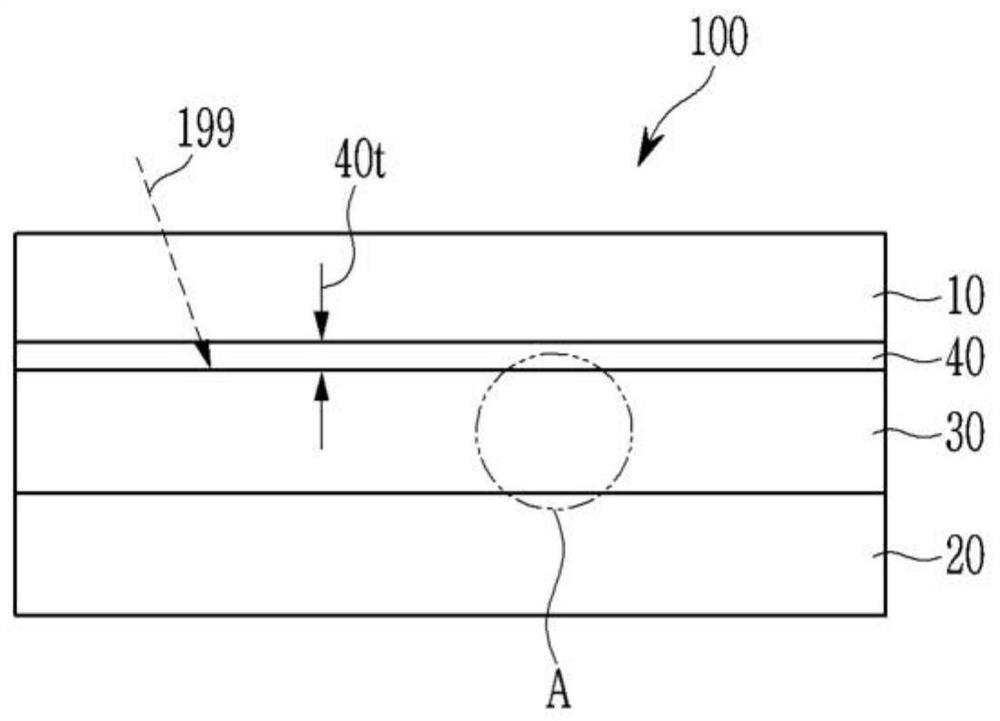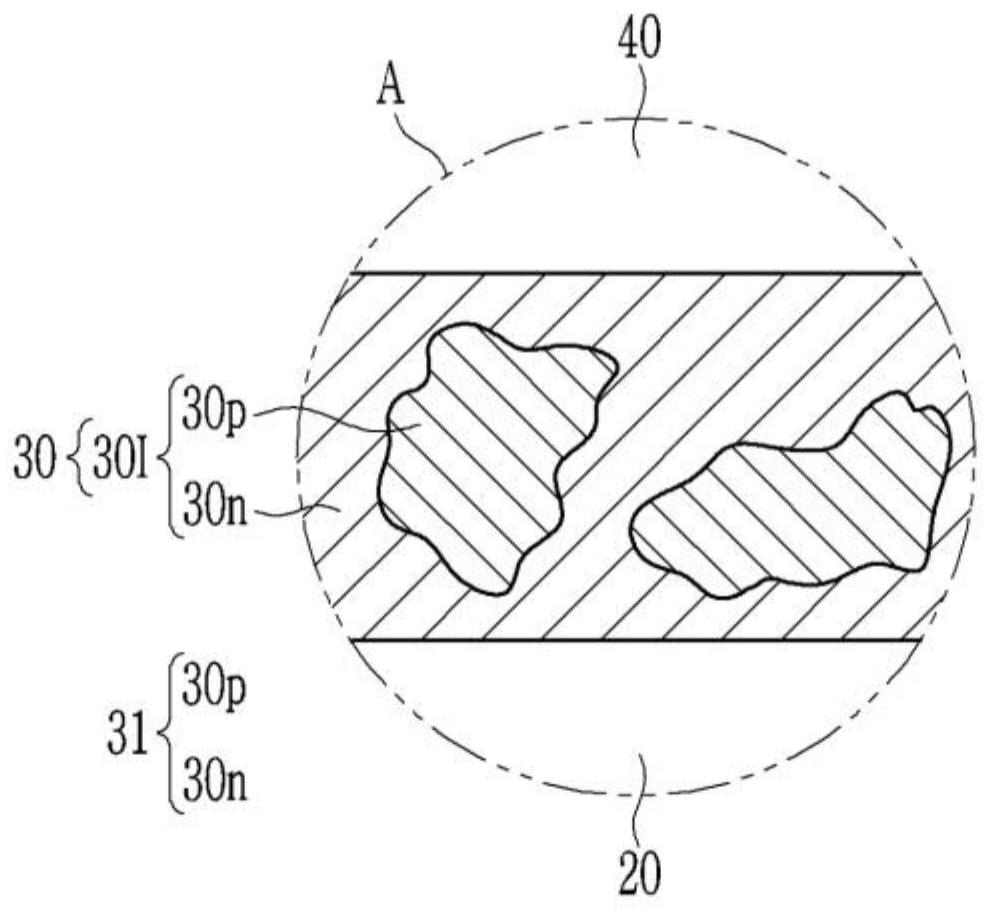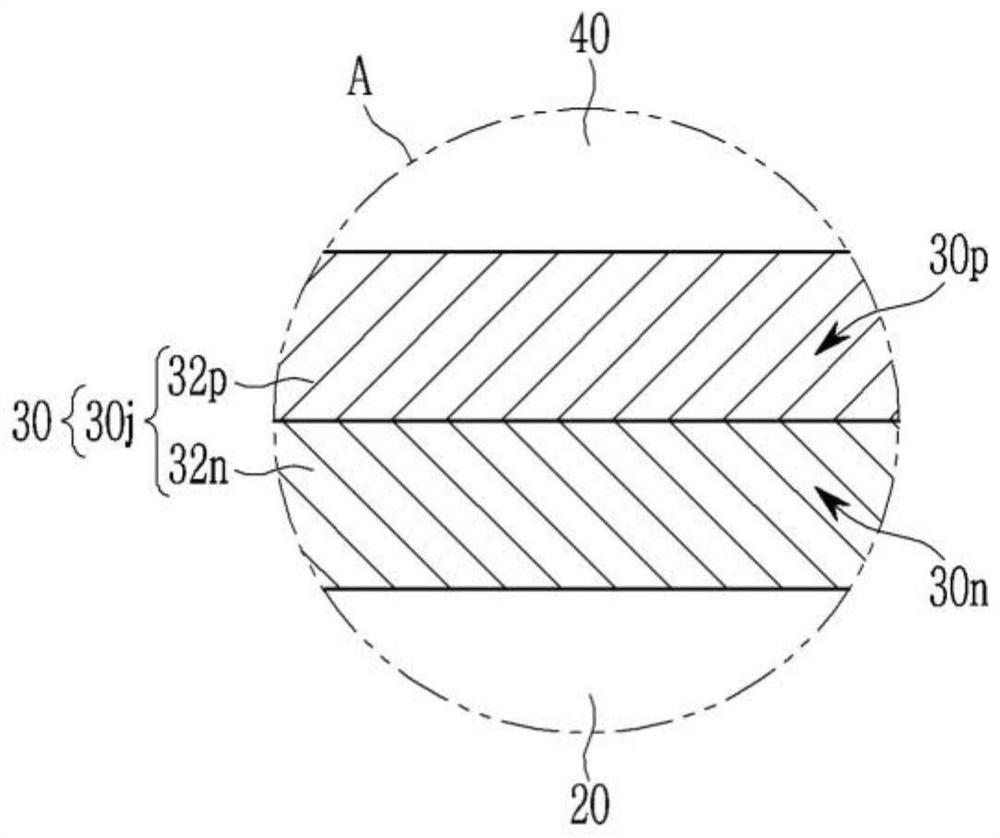Photoelectric conversion devices and organic sensors and electronic devices
一种光电转换、有机光电转换的技术,应用在电固体器件、光伏发电、电气元件等方向,能够解决难以精确地预测有机材料特性、无法容易地控制光电转换器件所需性质等问题,达到提高电荷提取效率、提高电荷迁移率、减少残留电荷的效果
- Summary
- Abstract
- Description
- Claims
- Application Information
AI Technical Summary
Problems solved by technology
Method used
Image
Examples
example 1
[0267] ITO was sputtered on a glass substrate to provide a 150 nm thick anode. Subsequently, the compound represented by Chemical Formula A was deposited on the anode to provide a 5 nm-thick charge blocking layer. Then, the p-type semiconductor (λ max : 545 nm) and an n-type semiconductor that is fullerene (C60) were co-deposited on the charge blocking layer at a volume ratio of 1.25:1 to provide a 100 nm thick photoelectric conversion layer. Yb (work function: 2.6eV) and GeO 2 was thermally evaporated on the photoelectric conversion layer at a weight ratio of 1:2 to provide a 2 nm thick charge assist layer. ITO (work function: 4.7 eV) was sputtered on the charge assist layer to provide a 7 nm thick cathode. Then, aluminum oxide (Al 2 o 3 ) was deposited on the cathode to provide a 40 nm thick anti-reflection layer and encapsulated with glass to provide a photoelectric conversion device.
[0268] [chemical formula A]
[0269]
[0270] [Chemical formula B-1]
[0271]...
example 2
[0273] Except for Yb and GeO 2 A photoelectric conversion device was fabricated according to the same procedure as in Example 1, except that it was thermally evaporated at a weight ratio of 1:3 to form a charge assisting layer.
example 3
[0275] ITO was sputtered on a glass substrate to provide a 150 nm thick anode. Subsequently, the compound represented by Chemical Formula A was deposited on the anode to provide a 5 nm-thick charge blocking layer. Then, a p-type semiconductor represented by Chemical Formula B-1 and an n-type semiconductor that is fullerene (C60) were co-deposited on the charge blocking layer at a volume ratio of 1.25:1 to provide a 100 nm-thick photoelectric conversion layer. Then, on the photoelectric conversion layer, Yb was thermally evaporated to form a 2nm-thick first charge auxiliary layer and GeO 2 was thermally evaporated to form a 0.5 nm-thick second charge assisting layer, thereby forming a two-layer charge assisting layer. ITO was sputtered on the two-layer charge assist layer to provide a 7 nm thick cathode. Then, aluminum oxide (Al 2 o 3 ) was deposited on the cathode to provide a 40 nm thick anti-reflection layer and encapsulated with glass to provide a photoelectric conversi...
PUM
| Property | Measurement | Unit |
|---|---|---|
| visible light transmittance | aaaaa | aaaaa |
| visible light transmittance | aaaaa | aaaaa |
| visible light transmittance | aaaaa | aaaaa |
Abstract
Description
Claims
Application Information
 Login to View More
Login to View More - R&D
- Intellectual Property
- Life Sciences
- Materials
- Tech Scout
- Unparalleled Data Quality
- Higher Quality Content
- 60% Fewer Hallucinations
Browse by: Latest US Patents, China's latest patents, Technical Efficacy Thesaurus, Application Domain, Technology Topic, Popular Technical Reports.
© 2025 PatSnap. All rights reserved.Legal|Privacy policy|Modern Slavery Act Transparency Statement|Sitemap|About US| Contact US: help@patsnap.com



